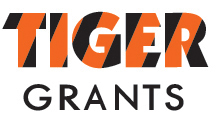- Home
- Administration
- Aeronautics
- Business with WYDOT
- Construction Projects
- Driver License and Records
- Economic Stimulus Projects (ARRA - TIGER)
- Engineering and Technical Programs
- Fuel Tax
- Highway Safety
- Human Resources
- Manuals and Publications
- News and Information
- Permits
- Planning/Projects/Research
- Titles, Plates and Registration
- Travel
- Trucking / Commercial Vehicles
- Vehicle Business Regulation
- Wyoming Highway Patrol
- Search
- Sitemap
TIGER Applications
TIGER APPLICATIONS

The United States Department of Transportation has provided the following explanation and history for TIGER discretionary grants.
“DOT is authorized to award $500 million in TIGER Discretionary Grants pursuant to the Consolidated and Further Continuing Appropriations Act, 2012 (Pub. L. 112-055, Nov. 18, 2011). As with previous rounds of TIGER, funds for the FY 2012 TIGER program are to be awarded on a competitive basis for projects that will have a significant impact on the Nation, a metropolitan area, or a region.”
“The Transportation Investment Generating Economic Recovery, or TIGER Discretionary Grant program, provides a unique opportunity for the U.S. Department of Transportation to invest in road, rail, transit and port projects that promise to achieve critical national objectives. Congress dedicated $1.5 billion for TIGER I, $600 million for TIGER II, and $526.944 million for the FY 2011 round of TIGER Grants to fund projects that have a significant impact on the Nation, a region or a metropolitan area. TIGER's highly competitive process, galvanized by tremendous applicant interest, allowed DOT to fund 51 innovative capital projects in TIGER I, and an additional 42 capital projects in TIGER II. TIGER II also featured a new Planning Grant category and 33 planning projects were also funded through TIGER II. In the FY 2011 round of TIGER Grants, DOT awarded 46 capital projects in 33 states and Puerto Rico. Each project is multi-modal, multi-jurisdictional or otherwise challenging to fund through existing programs. The TIGER program enables DOT to use a rigorous process to select projects with exceptional benefits, explore ways to deliver projects faster, and save on construction costs, and make investments in our Nation's infrastructure that make communities more livable and sustainable. ‘These are innovative, 21st century projects that will change the U.S. transportation landscape by strengthening the economy and creating jobs, reducing gridlock, and providing safe, affordable, and environmentally sustainable transportation choices,’ said Secretary LaHood. ‘Many of these projects could not have been funded without this program.’”





